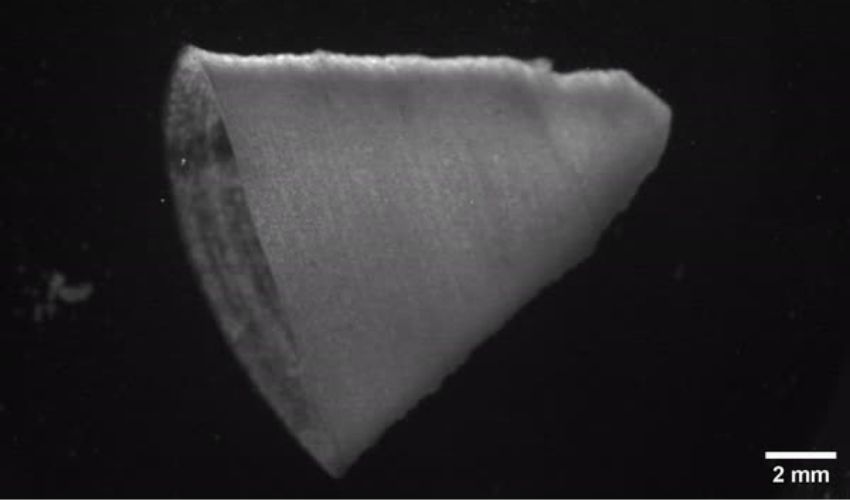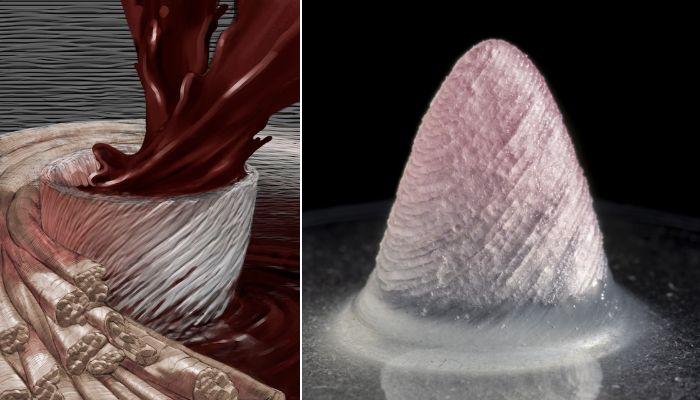3D Printed Heart Can Beat With New Fiber-Infused Ink

Heart disease is one of the leading causes of death worldwide. It is so widespread that according to the Centers of Disease Control and Prevention (CDC), one person dies every 33 seconds in the United States from cardiovascular disease with it being responsible for 1 in 5 deaths, about 695,000 people, in 2021. As such, research into treatment is imperative. Thankfully, Harvard scientists have recently had a breakthrough thanks to bioprinting. By using a special fiber-infused ink, they claim that they are able to 3D printed a functional heart ventricle that can mimic the beating of a human heart.
This is not the first time that bioprinting has been used in efforts to create organs. Currently, there is a shortage of organ donations and while according to the Organ Procurement and Transplantation Network, 42,000+ transplants occurred in 2022 alone, at least 17 people die each day while waiting for an organ transplant. To bridge this gap, bioprinting, or the act of using real cells to print living parts, has been put forth as a serious contender. However, though research continues, viability has been difficult to establish. By enabling the creation of tissue that can actually beat, this would bring us one step closer to not just being able to create 3D printed tissues for research but actually print entire organs.

Suji Choi, research associate at SEAS and first author on the paper, explains “People have been trying to replicate organ structures and functions to test drug safety and efficacy as a way of predicting what might happen in the clinical setting. FIG ink is capable of flowing through the printing nozzle but, once the structure is printed, it maintains its 3D shape. Because of those properties, I found it’s possible to print a ventricle-like structure and other complex 3D shapes without using extra support materials or scaffolds.”
Creating a Working 3D Printed Heart
In a paper published in Nature Materials, the researchers, who come from the Harvard John A. Paulson School of Engineering and Applied Sciences (SEAS), show how they have developed a new hydrogel ink that has been infused with gelatin fibers, known as fiber-infused gel (FIG) ink. This in turn has been used to enable the 3D printing of a functional heart ventricle that can even mimic the beating of a real human heart. The ink is printed through a nozzle and unlike other inks, the structure is able to maintain its 3D shape immediately after printing, thanks to the inclusion of the fibers, thus making it possible to print a ventricle-like structure without using extra support materials or scaffolds according to Choi. Moreover, the team was able to control the printing direction to then control how the heart muscle cells would align.
Once electrical stimulation was applied, it triggered a coordinated wave of contractions in alignment with the direction of those fibers, essentially pumping. And though this version is quite simplified and miniaturized, the researchers are working on building more life-like heart tissues with thicker muscles. Currently, the 3D printed ventricle can already pump 5 to 210 times more fluid volume than previous 3D printed hearts, therefore opening the way to build heart valves, dual-chambered miniature hearts and more.
Kevin “Kit” Parker, the Tarr Family Professor of Bioengineering and Applied Physics and Head of the Disease Biophysics Group at SEAS as well as a senior author on the paper, concludes “FIGs are but one tool we have developed for additive manufacturing. We have other methods in development as we continue our quest to build human tissues for regenerative therapeutics. The goal is not to be tool driven – we are tool agnostic in our search for a better way to build biology.” You can find out more, including the method for making the fibers, in the press release HERE.
What do you think of this latest research? Do you think fiber-infused ink will open up new applications for bioprinting in creating 3D printed hearts? Let us know in a comment below or on our LinkedIn, Facebook, and Twitter pages! Don’t forget to sign up for our free weekly Newsletter here, the latest 3D printing news straight to your inbox! You can also find all our videos on our YouTube channel.






